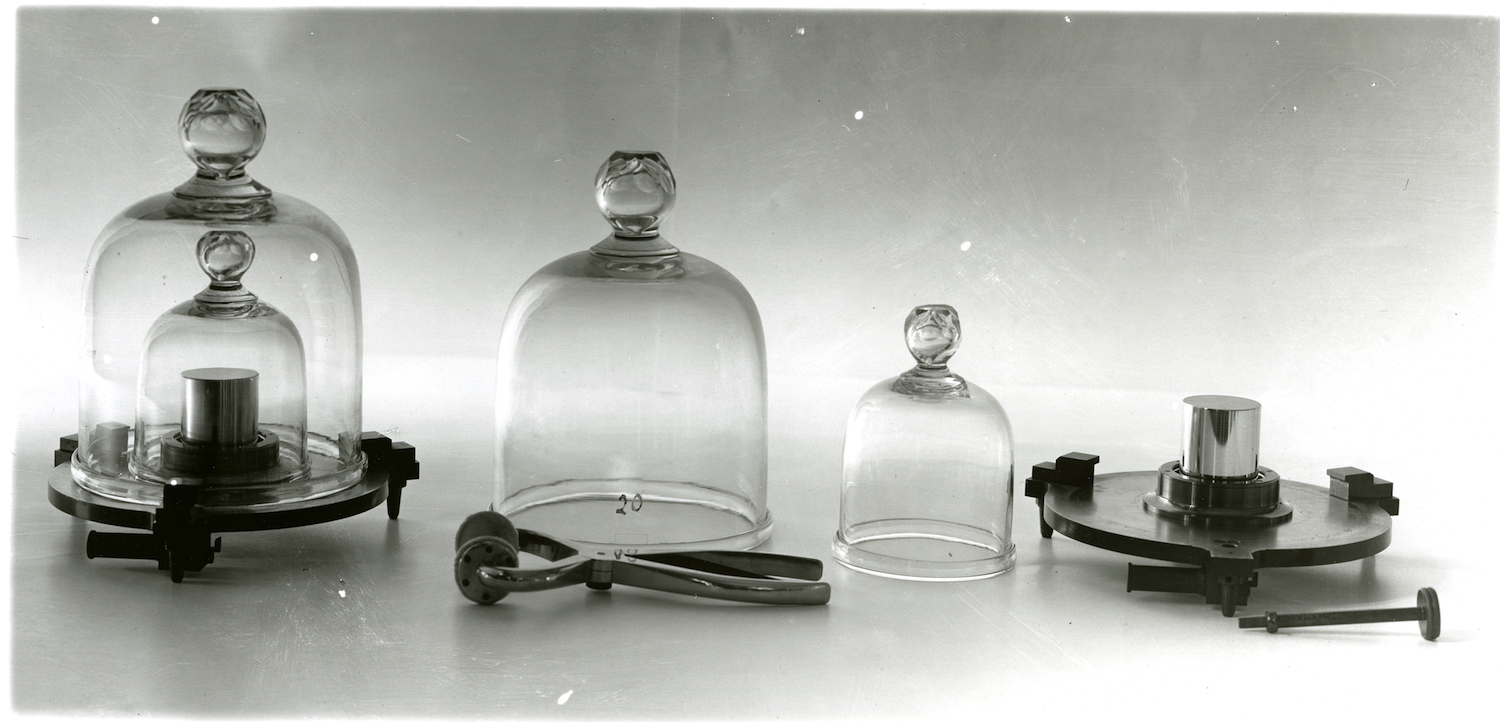A Mathy Makeover For The Kilogram
4:04 minutes

Jon Pratt is leader of the Fundamental Electrical Measurements Group at the National Institute of Standards and Technology in Gaithersburg, Maryland.
IRA: And now it’s time to play good thing, bad thing.
[MUSIC PLAYING]
Because every story has a flip side. Now, how do you know if something weighs a kilogram? If you’re the average person, you get out your scale. But that scale had to be calibrated, and the calibration requires a standard. And that standard is a 100-year-old hunk of metal locked away in a vault in Paris. But that could soon change. An international effort is underway to replace that chunk of metal with a more mathematical solution. And one team just announced a new precision measurement of Planck’s constant that could help pave the way.
Sounds complicated? Well, here to explain why this is good news and the potentially massive complications is Jon Pratt, Chief of Quantum Measurement Division of the Physical Measurement Lab at the National Institute of Standards and Technology in Gaithersburg, Maryland. Welcome to Science Friday.
JON PRATT: Hi, Ira. Glad to be here.
IRA: I’m glad to have you. Let’s start with the benefits, the good news. What’s good about ditching that metal cylinder?
JON PRATT: So I think the first thing to ask is what makes a good standard? And the idea is that a standard should be universally accessible, and it should be a fixed quantity. It should always be the same. And one of the things you just described, the hunk of metal over in Paris, well, at first glance, it’s pretty obvious that the existing standard sort of fails that universal accessibility test. It’s only available in Paris. I have to get on a plane and take hunks of metal over there to compare to it. So that’s a problem.
And increasingly, because of the precision with which we’re able to compare hunks of metal, it’s gotten to be an issue of whether I’m picking up mass while I go to the bathroom, while I’m sitting on the plane and I leave my mass unattended. Anyway, the other problem is that we know from recent experience that the mass itself, the IPK, sort of fails the second test about always being the same quantity. We know this because we pulled out the IPK as part of this business of trying to measure the Planck constant. And in the process, we discovered that the existing mass scale based on the IPK, appears to have shifted by 35 parts per billion. And we can’t say whether it was the IPK or whether it’s the masses that we’re hauling around, but that’s a problem with these types of artifact systems.
IRA: All right, let’s talk about the solution, then. What is being proposed?
JON PRATT: OK. So our new approach tries to solve this problem by basing everything on things we think of as constant in the universe, things like atoms and, more specifically, atomic frequencies, the speed of light. And where we get the Planck constant is this issue of the idea that energy is quantized. And so we have a quantum of energy that’s scaled by the Planck constant. So we have a couple of ways in which we can do experiments that link mass to the Planck constant.
IRA: And that’s not going to change any time soon. Is anybody going to notice the difference? Why should we care about this?
JON PRATT: Why should you care about this? Well, one of the games we play in the standards world is to make sure that nobody has to care. So the care we take in trying to make this transition from a standard that’s based on the hunk of metal to a standard that’s based on this sort of abstract idea about the quantization of energy in the universe is that we want both approaches to agree with each other. And we want to be able to do that at the level of precision that’s being done at the moment.
And that’s what’s presented a real challenge with coming up with an alternative strategy, is that we can really do a great job of comparing hunks of metal to each other.
IRA: I got to go. Jon Pratt of the National Institute of Standards and Technology. We’re going to take a break. When we come back, your science road trip. Stay with us.
Copyright © 2017 Science Friday Initiative. All rights reserved. Science Friday transcripts are produced on a tight deadline by 3Play Media. Fidelity to the original aired/published audio or video file might vary, and text might be updated or amended in the future. For the authoritative record of ScienceFriday’s programming, please visit the original aired/published recording. For terms of use and more information, visit our policies pages at http://www.sciencefriday.com/about/policies/
Christie Taylor was a producer for Science Friday. Her days involved diligent research, too many phone calls for an introvert, and asking scientists if they have any audio of that narwhal heartbeat.